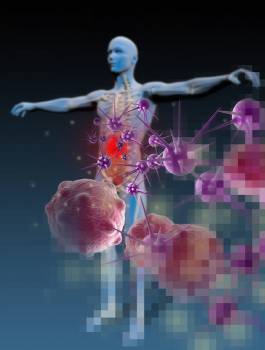Personalised Treatment for Cancer
 The race is on to make cancer treatment more specific and targeted to attack cancer cells only, and in dosages that are tailored to individuals.
The race is on to make cancer treatment more specific and targeted to attack cancer cells only, and in dosages that are tailored to individuals.
In the future, cancer patients are likely to get increasingly personalised treatment because oncologists now understand the biology of cancer better and are able to devise new treatments that attack cancer cells with greater sophistication.
“Our understanding of cancer biology now allows us to have an expanded range of effective targeted treatment,’” said Dr Khoo Kei Siong, the Deputy Medical Director of Parkway Cancer Centre (PCC), at a recent seminar. “Cancer treatment will become increasingly tailored and individualised based on the genetic makeup and the molecular characteristics of the cancer cells.”
He cited the example of the use of HER2-positive breast cancer as an example of how oncologists are able to identify a particular type of breast cancer and treat it with a treatment that targeted a specific protein within the body.
HER2 stands for human epidermal growth factor receptor 2 and it is a gene that plays a role in the behaviour of breast cancer. The HER2 gene makes HER2 receptors on cells that control how cells grow and divide. However, in some breast cancers, the HER2 gene is faulty and it makes too many copies of itself. This then causes breast cells to make too many HER2 receptors which leads to breast cells growing and dividing uncontrollably.
If oncologists are able to determine that a particular patient has HER2-positive breast cancer, it allows them to offer drugs that target this particular protein. As a result, HER2 is a biomarker and it can be used to see which patients will benefit from a particular kind of treatment, and which will not, said Dr Khoo.
While the example of the HER2 biomarker is an old one, over time, more and more biomarkers have been discovered and more and more drugs have been developed to attack different proteins or molecules.
“Ultimately, we think this sort of targeted treatment and the presence of biomarkers will allow us to select the right treatment and to tailor our treatment for each and every patient,” he said.
“We can even use the marker to tell how a patient will respond to a certain drug, whether we should give a higher or a lower dose.”
He said a lot of the progress followed a better understanding of cancer. “In order to tackle a problem, you must first understand what causes the problem, what makes cancer cells grow, what makes it spread, what makes it damage the tissue.”
The work of Professor Robert Weinberg at the Massachusetts Institute of Technology was important in laying out the hallmarks of cancer that enabled oncologists to understand cancer better, Dr Khoo said. “Because we now understand these facts, we are able to design specific strategies that address each and every one of these properties.”
For example, one of the hallmarks of cancer is its ability to evade the immune system. “Our immune system that is so effective in taking down bacteria and viruses has no answer to cancer,” he noted. But knowing that cancer has this property allows researchers to design therapies to circumvent the immune avoidance. That is how treatments like immunotherapy come in.
“Our immune cells should be able to see cancer cells and go after it but the cancer cell can secrete a certain substance, it’s like eye shades, it covers the eyes of the immune cells. The immune cells are blinded; they are not able to recognise the cancer cells.
“If I can design a molecule that prevents the eye shades from covering the eyes, then the immune cells will go after the cancer. And that is what immunotherapy does,” he said.
Cancer kills because it can spread to and damage other organs (metastasis). “If we can control metastasis, if we can shrink them, not allowing them to grow or disturb the organ functions, it usually comes with an improvement in symptoms whether it is cough or pain or shortness of breath; it improves the quality of life. In many cases, it will also improve the survival.”
Most of the new targeted treatments are currently used to treat cancer that has already spread i.e. advanced disease.
In future, targeted treatment and immunotherapy could also be useful in the treatment of early-stage cancers which may harbour micrometastasis. Micrometastasis “cannot be seen with the naked eye, cannot be felt with our hands, cannot be seen even in the most sophisticated scans,” Dr Khoo noted.
“If this micrometastasis is left alone, many of them will manifest at a later stage, a year later, two years later, sometimes five years later in the other organs.”
However because it is still microscopic, it offers oncologists a chance to eradicate it with treatment. “The eradication of micrometastasis in early cancer prevents recurrences and increases the rates of long-term survival,” said Dr Khoo.
The seminar “Understanding Cancer and Beyond” was organised by Channel NewsAsia and PCC and was held at the Pan Pacific Singapore hotel.
Personalised Treatment for Cancer originally appeared on Parkway Cancer Centre and has been republished with permission
Further Reading
The article above is meant to provide general information and does not replace a doctor's consultation.
Please see your doctor for professional advice.
